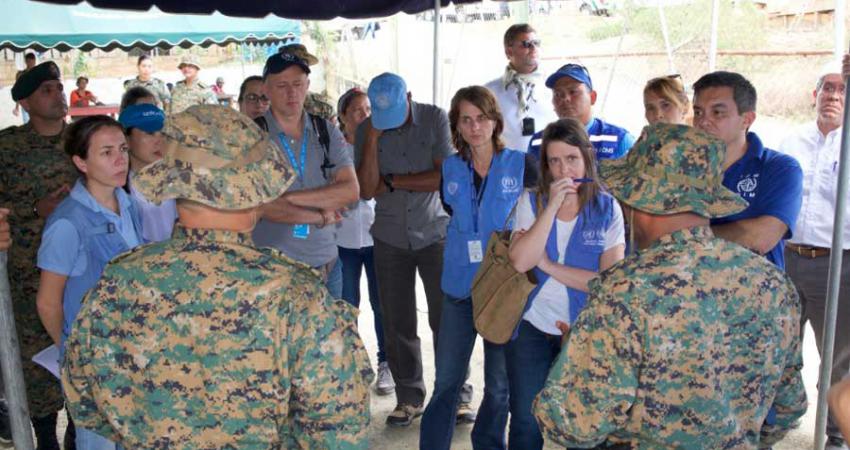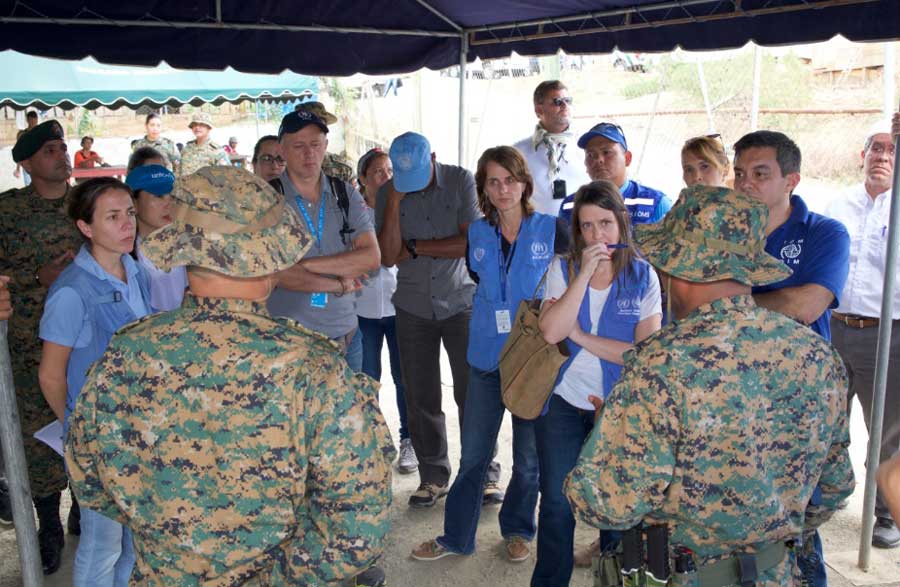United Nations visited the border area of The Darien, Panama


The visit to this temporary shelter is especially important given the needs of migrants who have crossed the Darien.
Panama. A team from the United Nations Organization for Migration (OIM) and other UN agencies in Panama visited the province of Darien, to monitor the migrant situation in this border area with Colombia. The Darien plug, as this jungle region of Central America is known, is one of the most dangerous passages for migrants in the world, with the presence of natural obstacles as well as criminal groups associated with arms and drug trafficking.
The UN were able to know the situation in situ in the Temporary Humanitarian Aid Center in the community of Peñitas, and to evaluate the current needs of migrants. They are an average of 250 migrants in the shelter and the local communities. They come through The Darien, from countries in Africa and Asia, mainly India and Bangladesh, but also from Cuba, Haiti and South America. Many of these people suffer the impact of the journey through the Darien jungle, requiring urgent medical attention upon their arrival in Panama, among other humanitarian needs.
The Temporary Humanitarian Aid Center is part of the "Controlled Flow" operation implemented by the Panamanian government on the Colombian border for the humanitarian assistance of migrants through the application of strict health, safety and migration controls.
The group of interagency officials met with the National Secretariat for Children, Adolescents and Family; with the National Migration Service, the Ministry of Health (MINSA), and the National Border Service. The needs identified during the mission are the base of a series of agreed upon actions, for the mobilization of resources to strengthen the humanitarian response provided by the Panamanian government.
In 2017, the Mesoamerica Program responded to the request of the Ministry of Public Security to develop a national strategy with capacity-building tools and protocols to better address migration crisis. As a result, the Manual for the Management of Temporary Shelters was developed, with a focus on the provinces of Darien and Chiriquí, both affected by the migration crisis caused by the high flows of Cubans and other extra-regional migrants since 2016.
The permanent monitoring of the situation in local areas and providing information on migration options to the people coming through the Darien will be strengthened in the upcoming months through the opening of the first migration information hub in this area, in the framework of the IOM Mesoamerica Program. The Migration Information Hubs are installed throughout Central America in border areas and in communities with high-emigration rates, to provide information and counselling to migrants.
